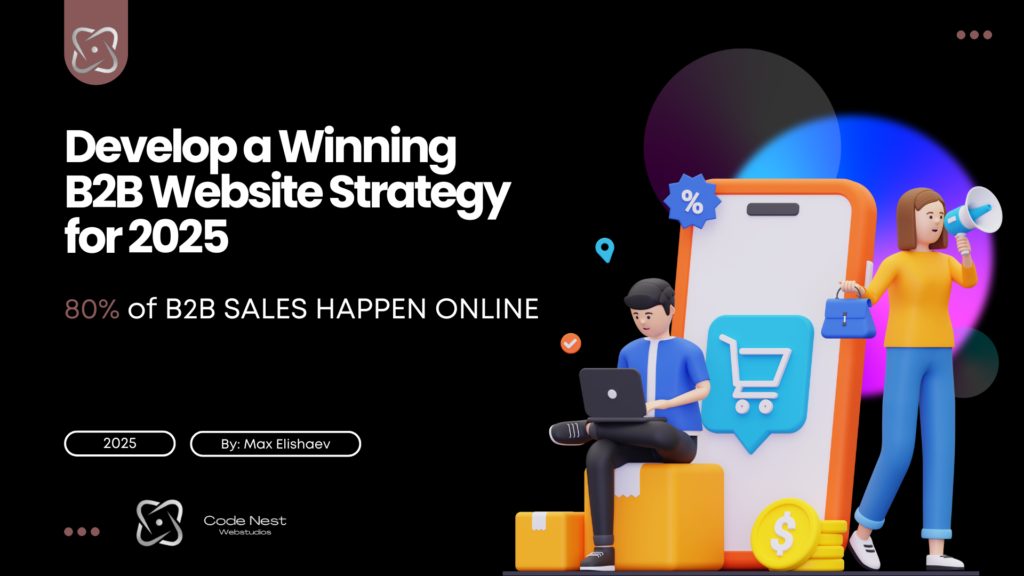How to Develop a Winning B2B Website Strategy for 2025

In today’s competitive digital landscape, an effective B2B website strategy is critical to stand out, attract leads, and convert them into loyal customers. As businesses adapt to shifting trends in 2025, crafting a cutting-edge B2B website has never been more important. This guide explores actionable tips and proven techniques to create a website that ranks high on Google, drives traffic, and delivers results.
1. Understand Your Target Audience
Knowing your audience is the foundation of a successful B2B website strategy. Develop detailed buyer personas to identify their pain points, goals, and search behaviors. Use tools like Google Analytics and keyword research platforms to uncover:
-
Search intent behind industry-specific queries.
-
Keywords frequently used by your ideal customers.
-
Questions potential clients are asking in your niche.
By understanding your audience, you can tailor your content to meet their needs and position yourself as a trusted authority in your industry.
2. Prioritize SEO-Optimized Content
Search engine optimization (SEO) is crucial for improving your website’s visibility on Google. Focus on creating high-quality, keyword-rich content that aligns with search intent. Here are key SEO strategies to implement in 2025:
-
Target Long-Tail Keywords: Use terms like “B2B marketing automation tools for small businesses” to capture highly specific traffic.
-
Leverage Featured Snippets: Optimize content for snippet opportunities by answering common industry questions concisely.
-
Create Evergreen Content: Write blog posts, whitepapers, and guides that remain relevant over time.
-
Improve Page Load Speeds: Use tools like Google PageSpeed Insights to enhance your site’s performance.
Remember, search engines reward websites that prioritize user experience and relevance.
3. Design for User Experience (UX)
Your website’s design can make or break your B2B strategy. A clean, intuitive layout encourages users to explore your site and take action. Focus on:
-
Mobile-First Design: Ensure your site performs seamlessly on smartphones and tablets.
-
Simplified Navigation: Use clear menus and CTAs (call-to-actions) to guide users.
-
Fast Loading Times: Optimize images, minimize code, and use caching techniques.
-
Accessibility: Make your site accessible to all users by adhering to ADA-compliance standards.
A frictionless UX builds trust, which is essential for converting B2B leads.
4. Showcase Your Value Proposition
Your B2B website must clearly communicate why clients should choose your business over competitors. Highlight your unique value proposition (UVP) through:
-
Compelling Headlines: Capture attention with benefit-driven headlines.
-
Client Testimonials and Case Studies: Build credibility by showcasing real results.
-
Data-Driven Insights: Use stats, charts, and infographics to back up claims.
-
Interactive Features: Include ROI calculators, product demos, or downloadable resources to engage users.
Position your brand as the go-to solution provider in your niche.
5. Integrate Lead Generation Tools
Lead generation is a core goal of any B2B website strategy. Incorporate tools and strategies that encourage visitors to take action:
-
Customizable Contact Forms: Make it easy for prospects to request more information.
-
Gated Content: Offer valuable resources (e.g., eBooks or whitepapers) in exchange for email addresses.
-
Chatbots: Provide instant support and qualify leads in real-time.
-
CTAs Throughout: Place clear, action-oriented CTAs strategically across your site.
Use CRM integrations to track leads and follow up effectively.
6. Focus on High-Quality Backlinks
Backlinks from authoritative websites are a major factor in search engine rankings. Build a strong backlink profile by:
-
Guest posting on industry-relevant blogs.
-
Partnering with influencers and thought leaders.
-
Sharing data-driven research that others will want to link to.
-
Actively participating in B2B forums and communities.
The more credible your site appears, the higher it will rank.
7. Measure Performance and Optimize Continuously
An effective B2B website strategy requires constant evaluation and refinement. Use analytics tools to track:
-
Website traffic and bounce rates.
-
Conversion rates from different CTAs.
-
Keywords driving the most organic traffic.
-
Time spent on key landing pages.
Regularly update your content, improve underperforming pages, and test new strategies to stay ahead of the competition.
Conclusion
Creating an effective B2B website strategy in 2025 is all about understanding your audience, optimizing for SEO, delivering an exceptional user experience, and continuously adapting to new trends. By implementing these strategies, you’ll not only rank higher on Google but also generate more leads and drive measurable business growth.
Investing in your B2B website isn’t just about staying competitive – it’s about establishing your business as a leader in your industry. Start building your winning strategy today and set yourself up for success in the year ahead!

